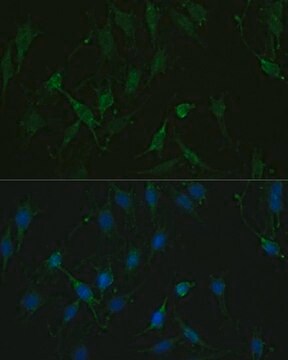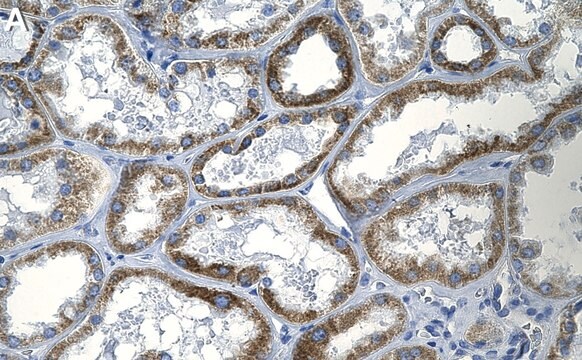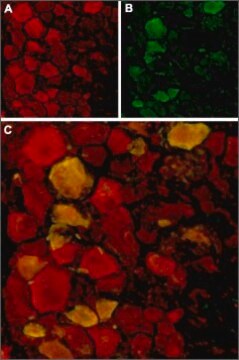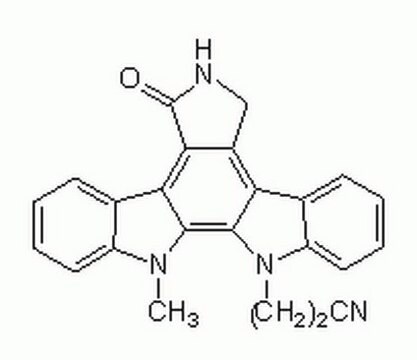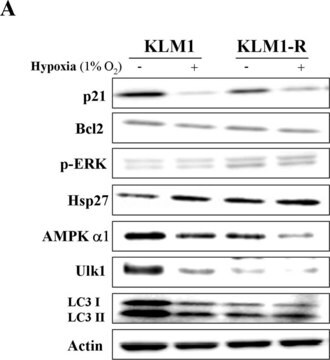MABS466
Anti-Trpv4 Antibody, clone 1B2.6
clone 1B2.6, from mouse
Synonim(y):
Trpv4, Transient receptor potential cation channel subfamily V member 4, TrpV4, Osm-9-like TRP channel 4, OTRPC4, Transient receptor potential protein 12, TRP12, Vanilloid receptor-like channel 2, Vanilloid receptor-like protein 2, VRL-2, Vanilloid recep
About This Item
Polecane produkty
pochodzenie biologiczne
mouse
Poziom jakości
forma przeciwciała
purified antibody
rodzaj przeciwciała
primary antibodies
klon
1B2.6, monoclonal
reaktywność gatunkowa
mouse, human
metody
immunocytochemistry: suitable
western blot: suitable
izotyp
IgG2aκ
numer dostępu NCBI
numer dostępu UniProt
Warunki transportu
wet ice
docelowa modyfikacja potranslacyjna
unmodified
informacje o genach
human ... TRPV4(59341)
Opis ogólny
Specyficzność
Immunogen
Zastosowanie
Signaling
Signaling Neuroscience
Jakość
Western Blotting Analysis: 0.1 µg/mL of this antibody detected Trpv4 in 10 µg of SK-MEL-28 cell lysate.
Opis wartości docelowych
Postać fizyczna
Przechowywanie i stabilność
Inne uwagi
Oświadczenie o zrzeczeniu się odpowiedzialności
Nie możesz znaleźć właściwego produktu?
Wypróbuj nasz Narzędzie selektora produktów.
Kod klasy składowania
12 - Non Combustible Liquids
Klasa zagrożenia wodnego (WGK)
WGK 1
Temperatura zapłonu (°F)
Not applicable
Temperatura zapłonu (°C)
Not applicable
Certyfikaty analizy (CoA)
Poszukaj Certyfikaty analizy (CoA), wpisując numer partii/serii produktów. Numery serii i partii można znaleźć na etykiecie produktu po słowach „seria” lub „partia”.
Masz już ten produkt?
Dokumenty związane z niedawno zakupionymi produktami zostały zamieszczone w Bibliotece dokumentów.
Nasz zespół naukowców ma doświadczenie we wszystkich obszarach badań, w tym w naukach przyrodniczych, materiałoznawstwie, syntezie chemicznej, chromatografii, analityce i wielu innych dziedzinach.
Skontaktuj się z zespołem ds. pomocy technicznej
